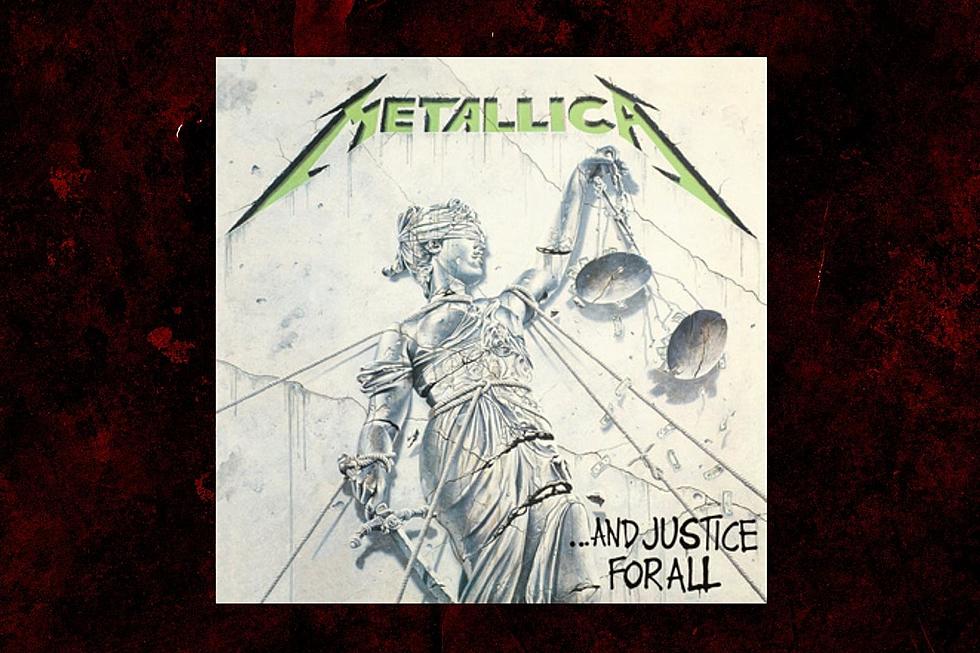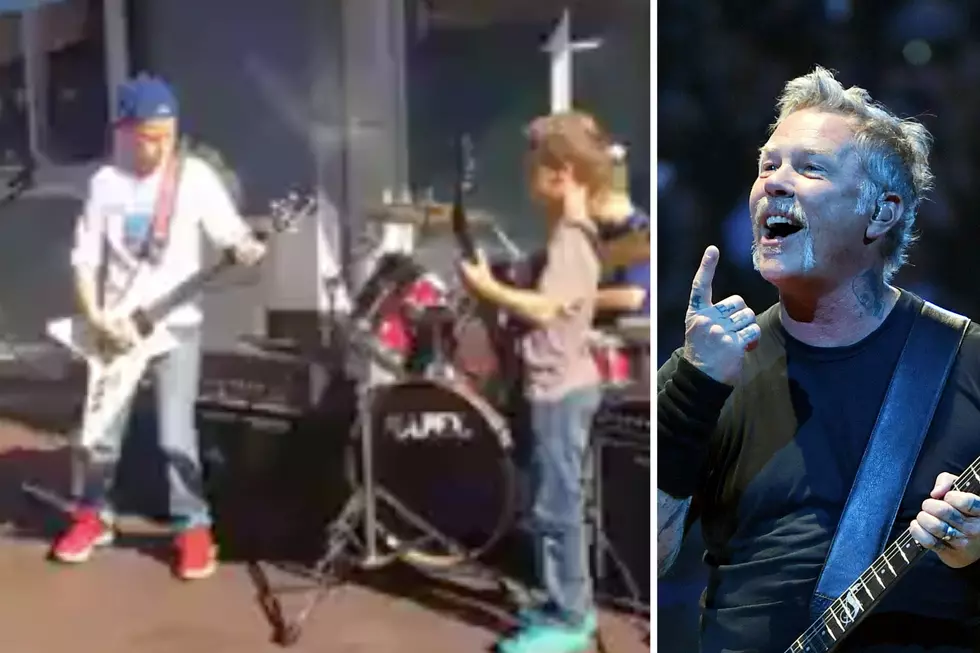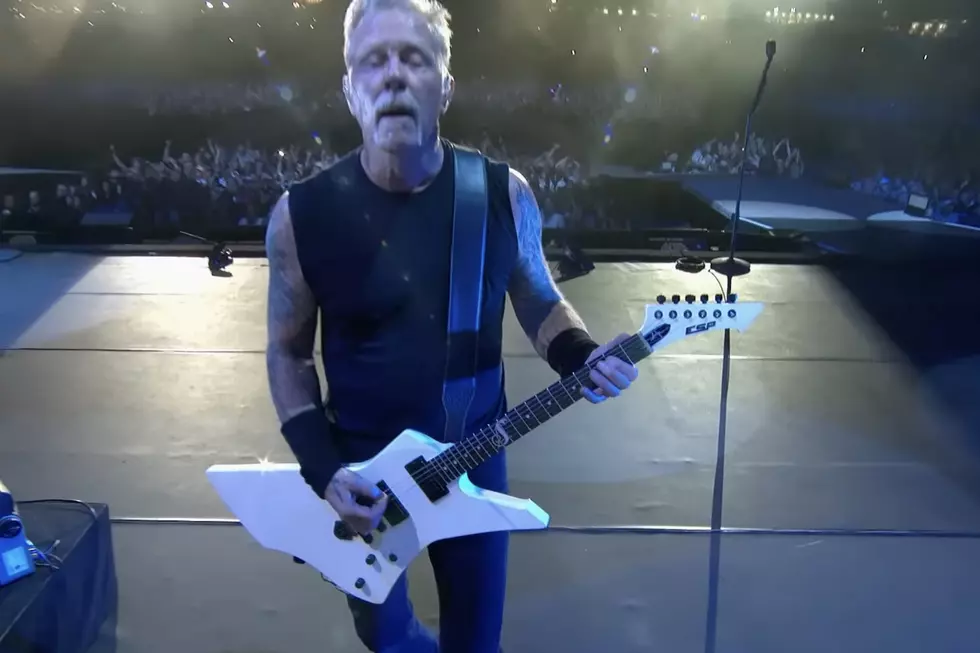
Metallica, ‘… And Justice for All’ – Album Overview
After the death of Cliff Burton, Metallica were at a crossroads.
The band was achieving greater success with every album, and Burton was a vital part of that success and their chemistry. But, after getting the blessing of Cliff’s family, Metallica decided to continue. They began the audition process for a new bassist, seeing more than 50 different musicians including Les Claypool of Primus and Troy Gregory of Prong.
Jason Newsted of Flotsam and Jetsam was a huge Metallica fan and ended up getting the gig. The band, working through their grief over Burton’s death, was tough on the new guy, subjecting him to hazing that never really stopped.
With the new lineup in place, in August 1987 Metallica released The $5.98 E.P.: Garage Days Re-Revisited, five cover songs from groups such as Diamond Head, Killing Joke and Misfits. In early 1988 they entered One on One Studios in Los Angeles to begin work on their next studio album with Mike Clink, who produced Guns ‘N Roses' Appetite For Destruction. After a couple of months, Metallica brought in Flemming Rasmussen, who they had worked with on their previous two albums.

The songs on ...And Justice for All are complex and angry, with several very long tracks (two over nine minutes) and a colder sound that their earlier albums. The mix of the album is also notable, with Newsted’s bass almost inaudible.
...And Justice for All was released Sept. 7, 1988—the release date is a bit confusing—and was Metallica’s commercial breakthrough. It went all the way to No. 6 on the Billboard album chart and would go on to sell over 8 million copies. It was also nominated for a Grammy in 1989 for Best Hard Rock/Metal Performance, but in one of the most ridiculous votes in all of Grammy history, lost to Jethro Tull.
After refusing to film promo videos on their first three records, Metallica finally relented on ...And Justice For All with "One," which turned out to be an all-time classic video.
...And Justice for All Track By Track
"Blackened"
After acoustic intros on their prior two albums, Metallica kept the intro for "Blackened" electric, before kicking into furious thrash riffs about 40 seconds in. It was the first song Newsted co-wrote after joining the band, and would be the only songwriting credit he would receive on ...And Justice for All. The lyrics talk about nuclear destruction and the "death of Mother Earth."
"...And Justice for All"
As on their prior two albums, Metallica put the title track as the second song on ...And Justice for All. The lyrical thread of the album is social injustice, and the Pledge of Allegiance is quoted in the epic and complex title track. A shortened version was released as a single, but did not chart. The song is so difficult to play live that after the Damaged Justice tour in 1988 the band shelved the song and wouldn’t play it in concert again for 19 years.
"Eye of the Beholder"
Even though it was released as a single (but did not chart), "Eye of the Beholder" is one of the more obscure songs on the album. Part of the reason may be that Metallica hasn’t played the track live in its entirety since 1989. It’s a good song, complex and packed with quality riffs. The lyrics are about placing limits on freedom in general, and freedom of speech specifically.
"One"
This was a groundbreaking song for Metallica, being their first video and their first single to hit the Billboard chart, peaking at No. 35. They also won the 1990 Grammy for Best Metal Performance for this song. Based on the 1939 novel Johnny Got His Gun, it’s about a soldier who loses his arms, legs, ears, eyes and mouth after being hit by an artillery shell, but his mind is completely intact.
The video for "One" incorporated scenes from the 1971 movie Johnny Got His Gun. It was shot in black and white, and shows the band performing the song in a warehouse. There were two other alternate versions of the video released, one without the movie clips and the other simply shortened.
"The Shortest Straw"
Continuing the album’s lyrical theme of injustice, "The Shortest Straw" exposes the blacklisting and McCarthyism that took place in the U.S. during the 1950s and ‘60s. Musically, it’s lesser-known than most of the songs on ...And Justice for All, but has one of the best guitar solos on the album.
"Harvester of Sorrow"
The first single released from ...And Justice for All, "Harvester of Sorrow" made the chart in the U.K., but not in the U.S. It’s musically progressive, but also very angry. It’s about a man that slips into insanity and lashes out at his family, hinting at the end of the song that he kills them.
"The Frayed Ends of Sanity"
The opening chants on this song came from the classic movie The Wizard of Oz. Because of the length of the songs on ...And Justice for All, Metallica wasn’t able to fit all the songs into their live show during that era. "The Frayed Ends of Sanity" has never been played live in its entirety, just snippets and portions of the track.
"To Live is to Die"
This was written as a tribute to Cliff Burton, who liked to use the phrase that became the song title. "To Live is to Die" used riffs written by Burton, and is the longest track on ...And Justice for All, clocking in at 9 minutes 49 seconds. It’s almost completely instrumental, with some spoken word lyrics towards the end. Metallica played parts of the song live over the years, but it was not played in its entirety until the band’s 30 Years of Metallica concerts in 2011.
"Dyers Eve"
Metallica brings back the thrash to close out ...And Justice for All. "Dyers Eve" is the shortest song on the album at just over five minutes. The lyrics are about a child kept hidden from the real world by his parents and his anger and suicidal thoughts. As with several other songs on this album, it wasn’t played live on tours supporting this album. It finally saw the light of day in concert for the first time in 2004.
Watch Metallica Perform "Blackened" Live in Buffalo
Here Are Some of Our Favorite Metallica T-Shirts
Some of Our Favorite Live Photos of Lars Ulrich
More From Ultimate Metallica









